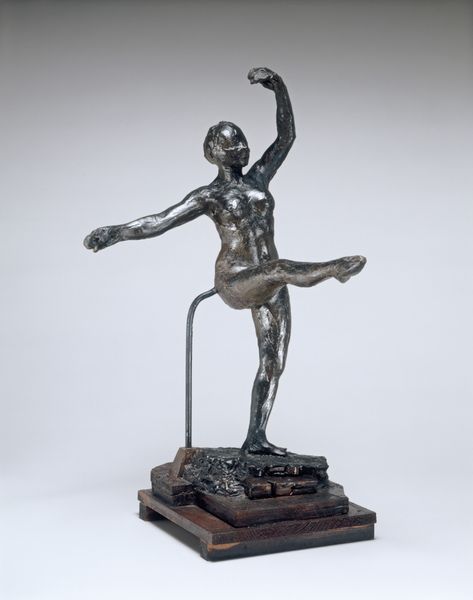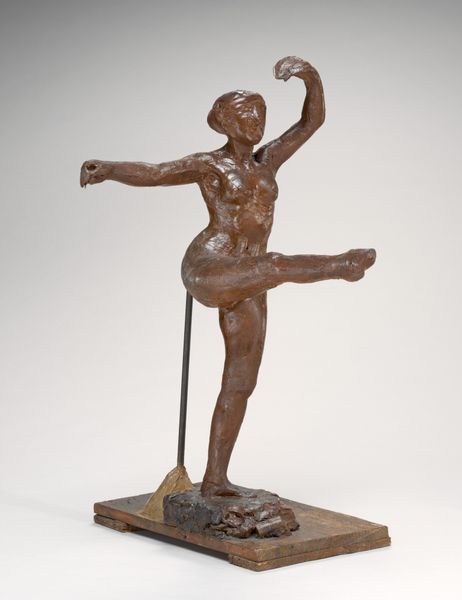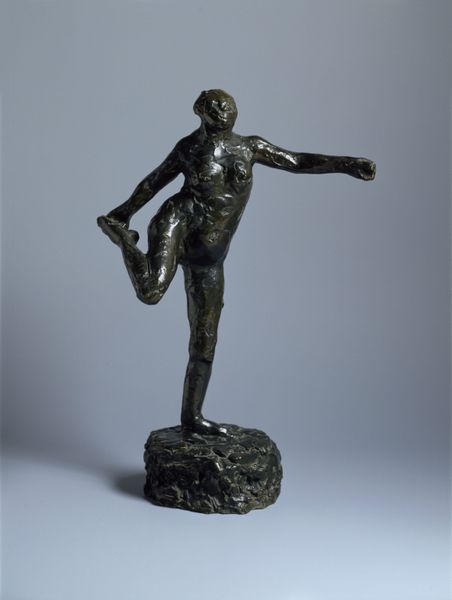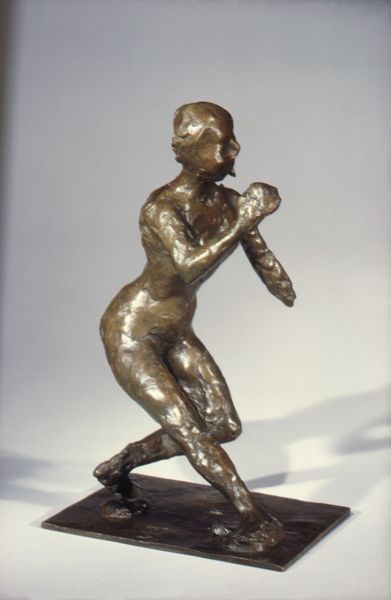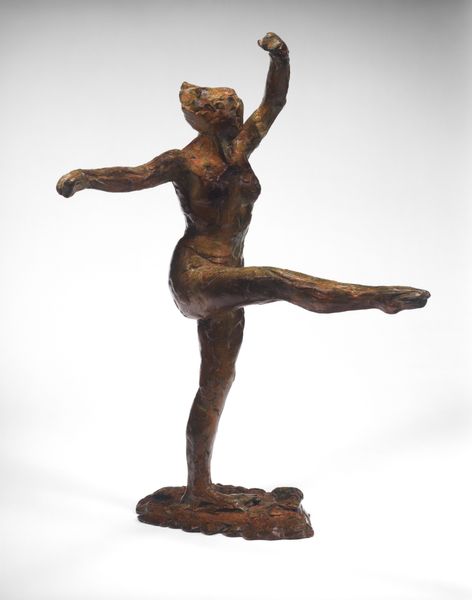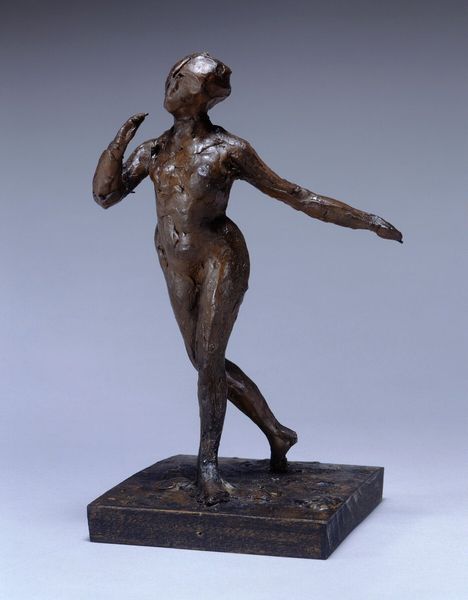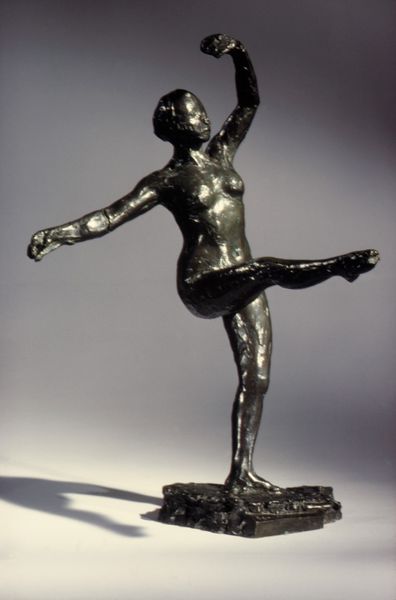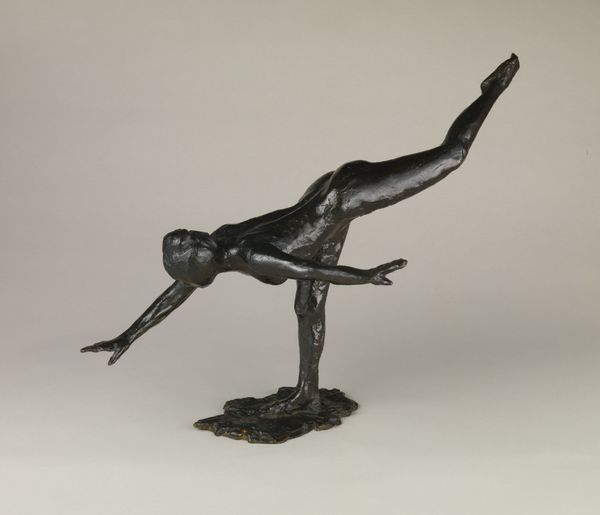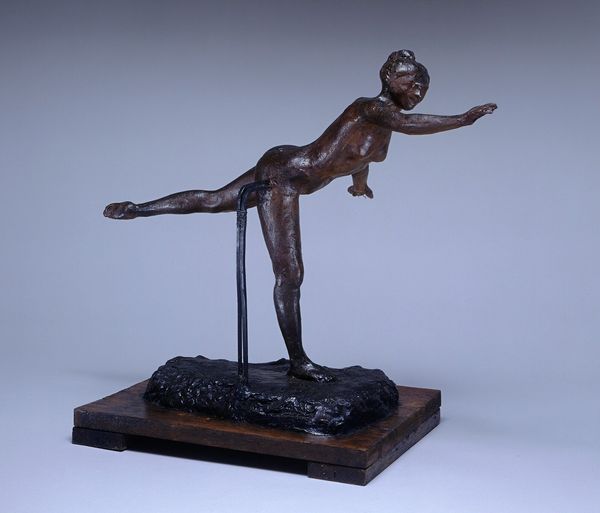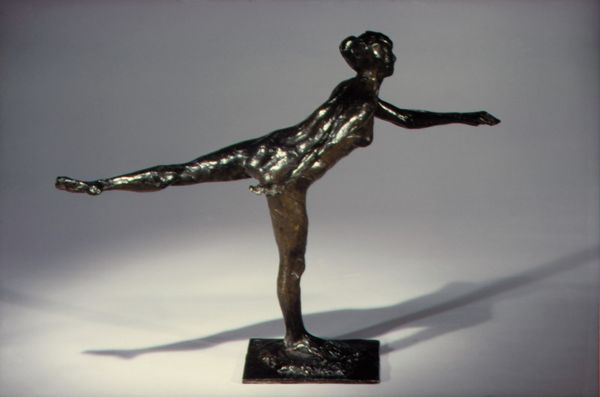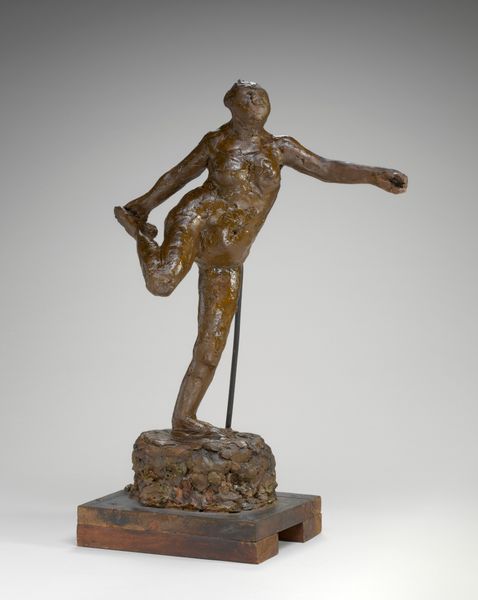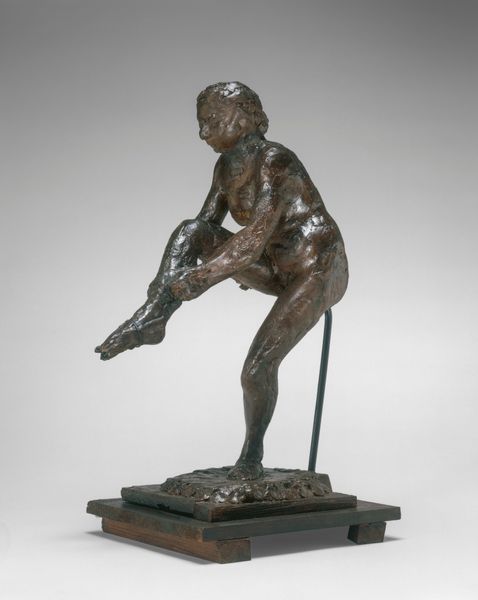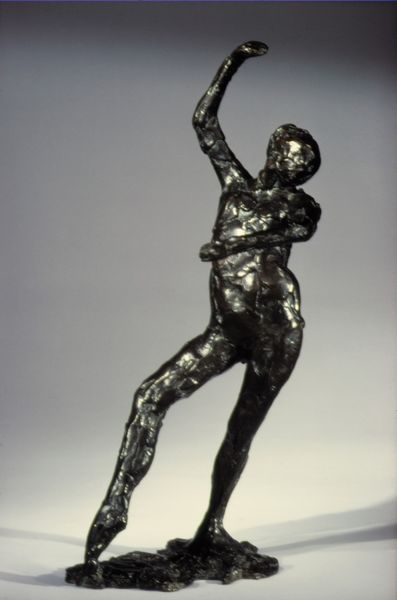
bronze, sculpture
#
portrait
#
impressionism
#
sculpture
#
bronze
#
figuration
#
sculpture
#
decorative-art
Dimensions: Overall: 8 1/8 × 4 1/4 × 10 1/4 in. (20.6 × 10.8 × 26 cm)
Copyright: Public Domain
Editor: Here we have Edgar Degas’s "Second Arabesque," a bronze sculpture created sometime between 1850 and 1920. I’m really struck by how dynamic it feels, even though it's a static object. She almost seems like she’s about to twirl right off that base! What stands out to you about this sculpture? Curator: Ah, Degas! This piece...it whispers to me of fleeting moments. It's as if he's caught the dancer not just in motion, but in the very *idea* of motion, right? Do you see how the bronze itself seems to be breathing? It's rough, almost unfinished in places, which lends such a feeling of immediacy. Editor: I do see that! It’s not idealized or smoothed over, it's like a sketch in bronze. Curator: Exactly! Degas wasn't aiming for perfect representation, darling. He wanted to capture the essence, that fragile beauty that evaporates in an instant. It reminds me of trying to catch smoke – a dance in itself! But does it ever occur to you this is more than art? Consider the artist… he used wax as a base; could he know it would later be cast in bronze? Could this gesture somehow reveal his view about a legacy that would endure? Editor: Wow, that's an interesting way to think about it. He’s freezing something ephemeral into a very permanent medium. Curator: Precisely! He’s defying time, mortality, even the physical limitations of the body. What a profound gesture, don't you think? And doesn't it just make you want to leap across the room yourself? Editor: It does! It makes me appreciate the hard work that’s put into dancing. I never looked at a bronze cast this way before! Curator: And there we have it, dear student, art revealing new perspectives. What a gift!
Comments
No comments
Be the first to comment and join the conversation on the ultimate creative platform.
